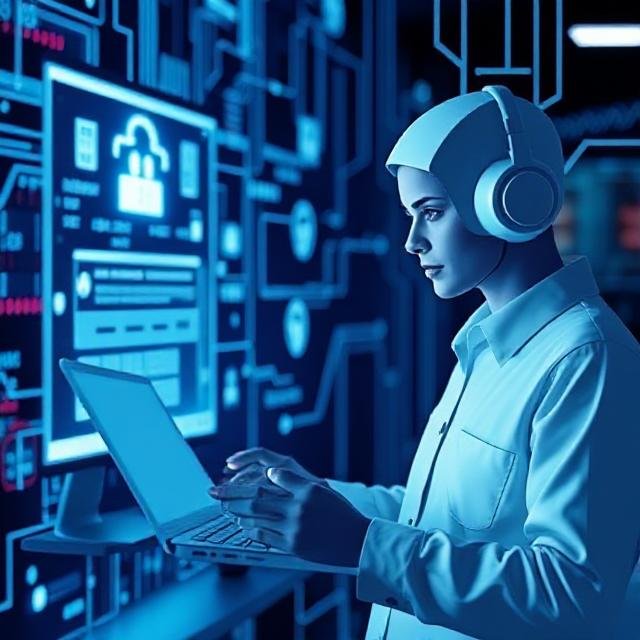The Technologies Reshaping Customer Service in 2025

The Technologies Reshaping Customer Service in 2025
Customer service is undergoing a major transformation — and technology is leading the charge.
In 2025, businesses are no longer just reacting to customer needs; they’re anticipating them. With tools like AI, automation, and real-time analytics now at their fingertips, companies can deliver faster, smarter, and more personalized support than ever before.
Let’s explore the top technologies that are redefining what great customer service looks like this year.
1. Artificial Intelligence (AI) and Chatbots
AI-powered chatbots have evolved far beyond simple “FAQ bots.” Today’s intelligent assistants can understand complex queries, resolve issues autonomously, and even detect customer sentiment in real time.
Why It Matters:
- Reduces wait times with instant responses
- Handles high volumes of inquiries simultaneously
- Learns from each interaction to improve future support
Whether it’s resetting a password or tracking an order, AI is helping businesses scale support without sacrificing quality.
2. Conversational AI and Voice Assistants
Conversational AI takes customer interaction a step further by using natural language processing (NLP) to engage customers in human-like conversations across voice and text platforms.
Examples:
- Smart virtual agents on websites and apps
- Voice-based support via Alexa, Google Assistant, and custom voice interfaces
- Personalized recommendations based on conversation history
These tools create a seamless, intuitive experience that feels less like interacting with a machine — and more like talking to a helpful assistant.
3. Omnichannel Customer Engagement
Customers don’t want to repeat themselves across different channels. Omnichannel support ensures every interaction — whether via email, live chat, phone, or social media — is connected and consistent.
Key Benefits:
- Unified customer profiles across all touchpoints
- Seamless transitions between channels
- Real-time updates for both customers and support teams
This approach delivers a smoother, more personalized experience — and builds stronger customer relationships.
4. Predictive Analytics & Personalization
With access to vast amounts of data, companies can now predict customer behavior and tailor interactions accordingly.
How It Works:
- Analyze past purchases, browsing habits, and support history
- Offer proactive support (e.g., “We noticed your package was delayed”)
- Suggest relevant products, services, or troubleshooting steps
Predictive tools empower businesses to be one step ahead — making every interaction feel timely and relevant.
5. Self-Service and Knowledge Management Platforms
More customers than ever prefer solving problems on their own — and smart self-service tools make that possible.
What’s Included:
- Interactive FAQs and how-to guides
- AI-driven search functions that understand intent
- Mobile-friendly knowledge bases and help centers
When customers can find answers quickly, it reduces frustration and frees up agents to handle more complex issues.
6. Augmented Reality (AR) and Visual Support
From virtual try-ons to guided troubleshooting, AR is changing the way brands interact with customers — especially when it comes to visual problem-solving.
Use Cases:
- Remote support with live video and screen annotations
- Step-by-step visual instructions for product setup
- Virtual consultations and product demos
These tools reduce the need for in-person visits and speed up resolution — especially for technical or high-touch services.
7. Voice of the Customer (VoC) Platforms
Understanding customer sentiment in real time is crucial for improving service delivery. VoC tools gather insights directly from customer feedback across multiple channels.
What They Do:
- Capture feedback after every interaction
- Track trends and identify recurring pain points
- Enable continuous improvement through data-driven decisions
By listening closely to what customers say (and how they feel), companies can refine their strategies and boost satisfaction.
8. Intelligent Automation and Ticketing Systems
Automation isn’t just about efficiency — it’s about accuracy and personalization at scale.
How It Helps:
- Automatically categorizes and prioritizes support tickets
- Routes complex cases to the right agent based on skills and availability
- Tracks resolution times and performance metrics for continuous optimization
This leads to fewer errors, shorter response times, and a better overall experience for both customers and support teams.
9. CRM Integration Across Touchpoints
Modern customer relationship management (CRM) systems do more than store contact info — they power personalized, context-aware interactions.
Benefits:
- Agents have full visibility into customer history
- Interactions are tailored based on past behavior
- Follow-ups are automated and relevant
A well-integrated CRM ensures every customer feels seen, heard, and understood.
10. Emotion Recognition and Sentiment Analysis
New advancements in emotion recognition allow companies to gauge how customers feel during interactions — whether through voice tone, facial expressions, or written communication.
Impact:
- Enables real-time adjustments to improve customer mood
- Helps train agents to respond more empathetically
- Identifies high-risk interactions that require escalation
This level of emotional intelligence brings a new dimension to customer care.
The Future Is Here
Customer service in 2025 is no longer reactive — it’s predictive, personalized, and powered by technology that enhances every interaction.
Businesses that embrace these innovations aren’t just improving support — they’re building deeper trust, loyalty, and long-term success.
If you’re looking to modernize your customer service strategy, we can help you implement the right tools for your team.
📞 Contact us today to learn how these technologies can work for your business.





